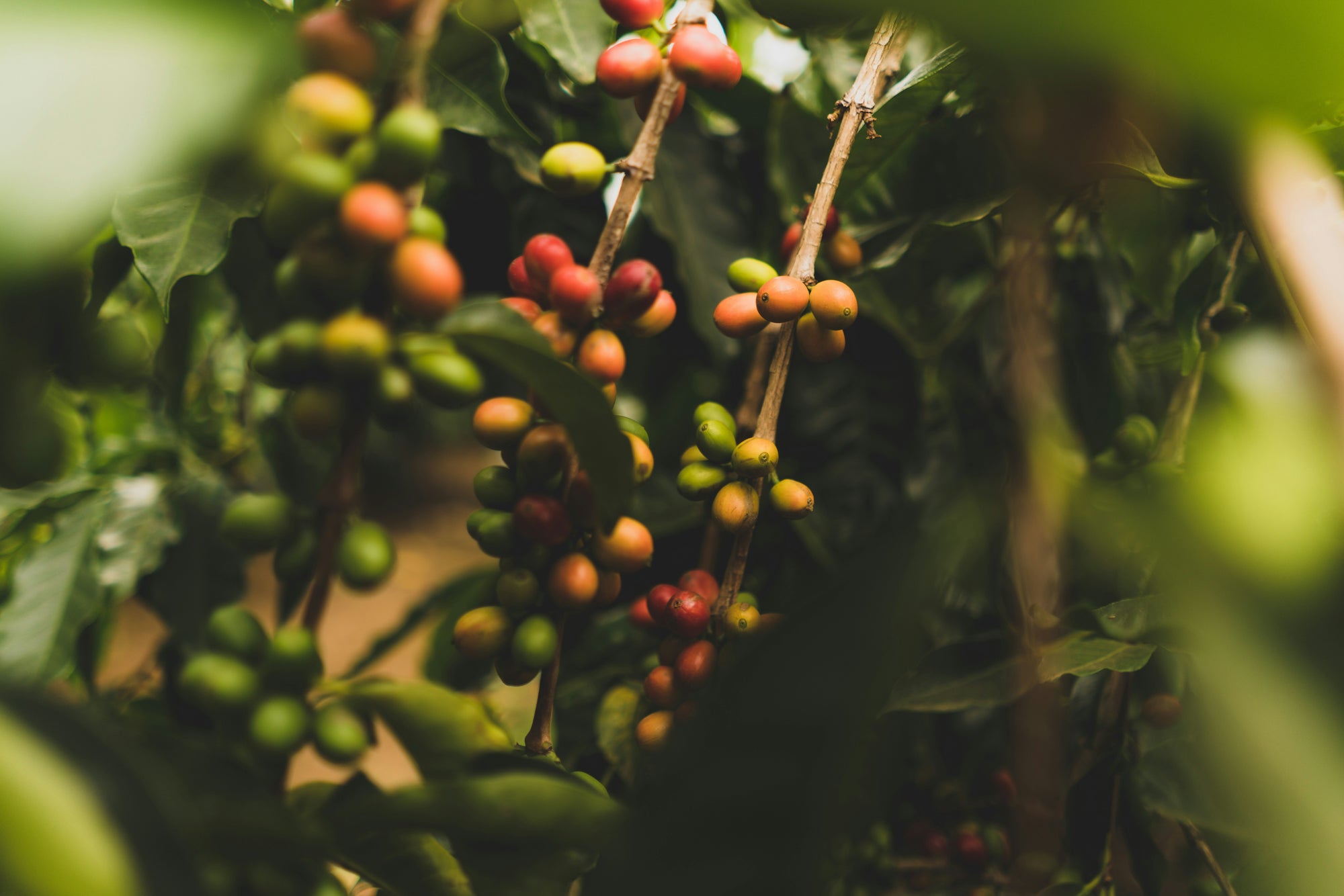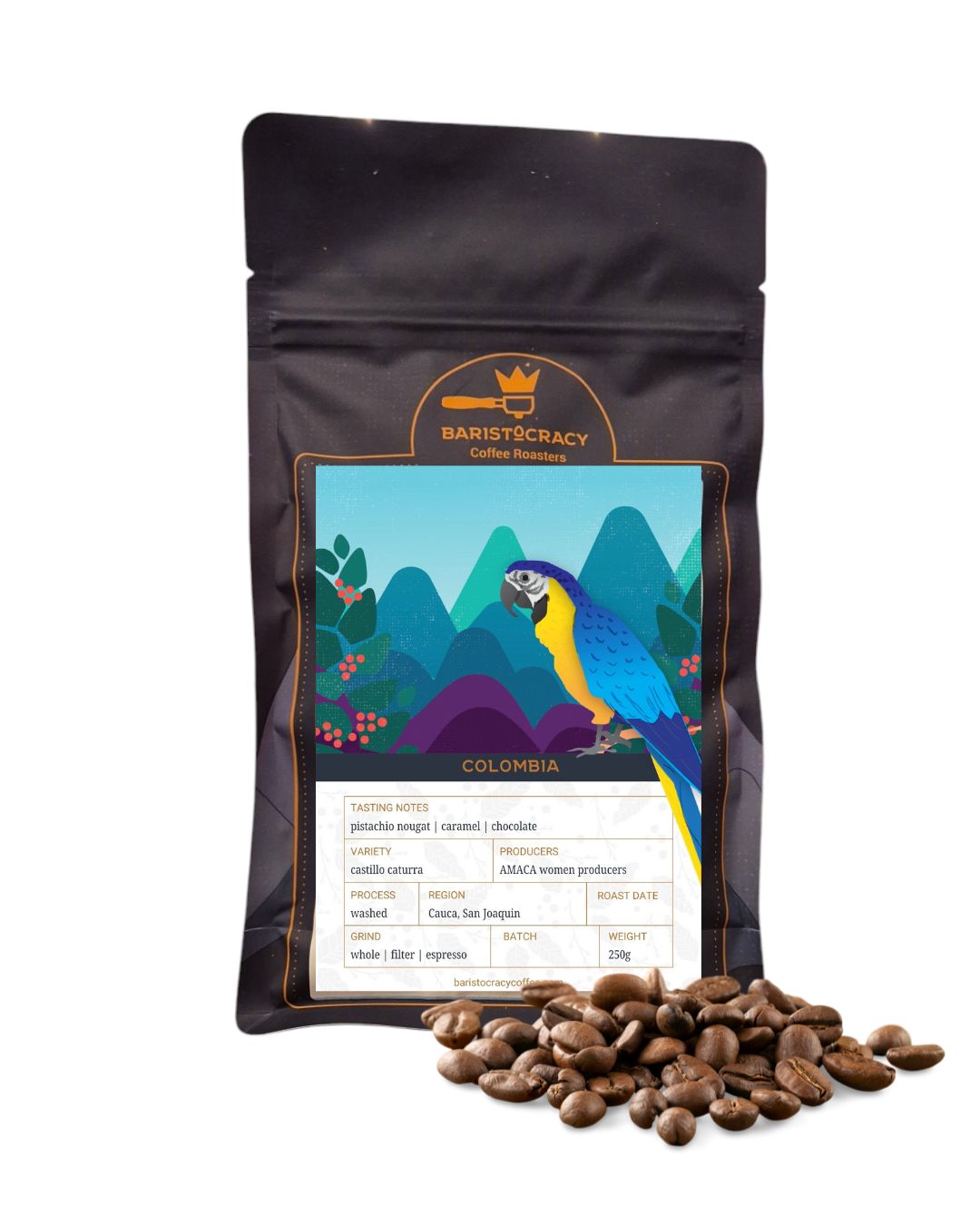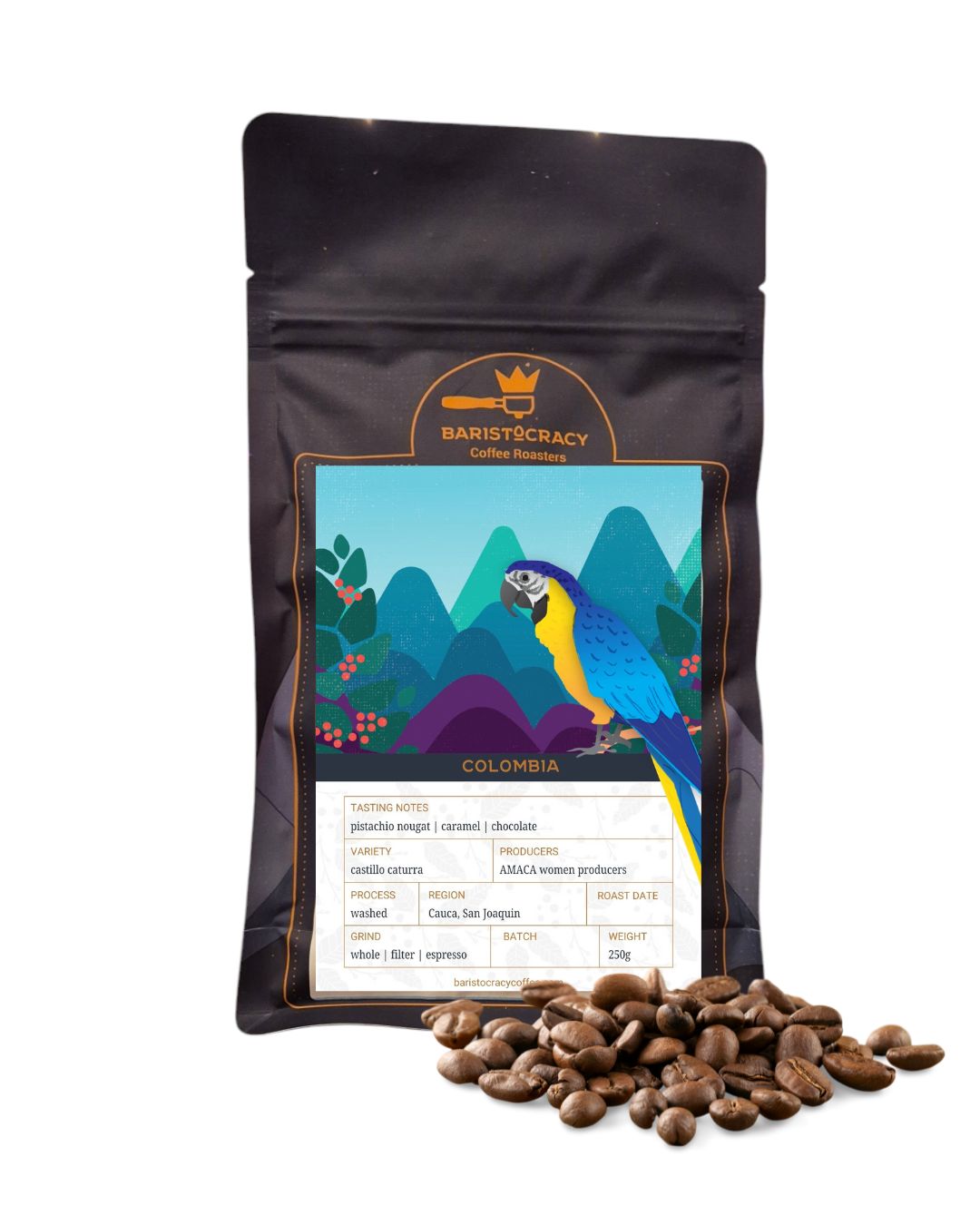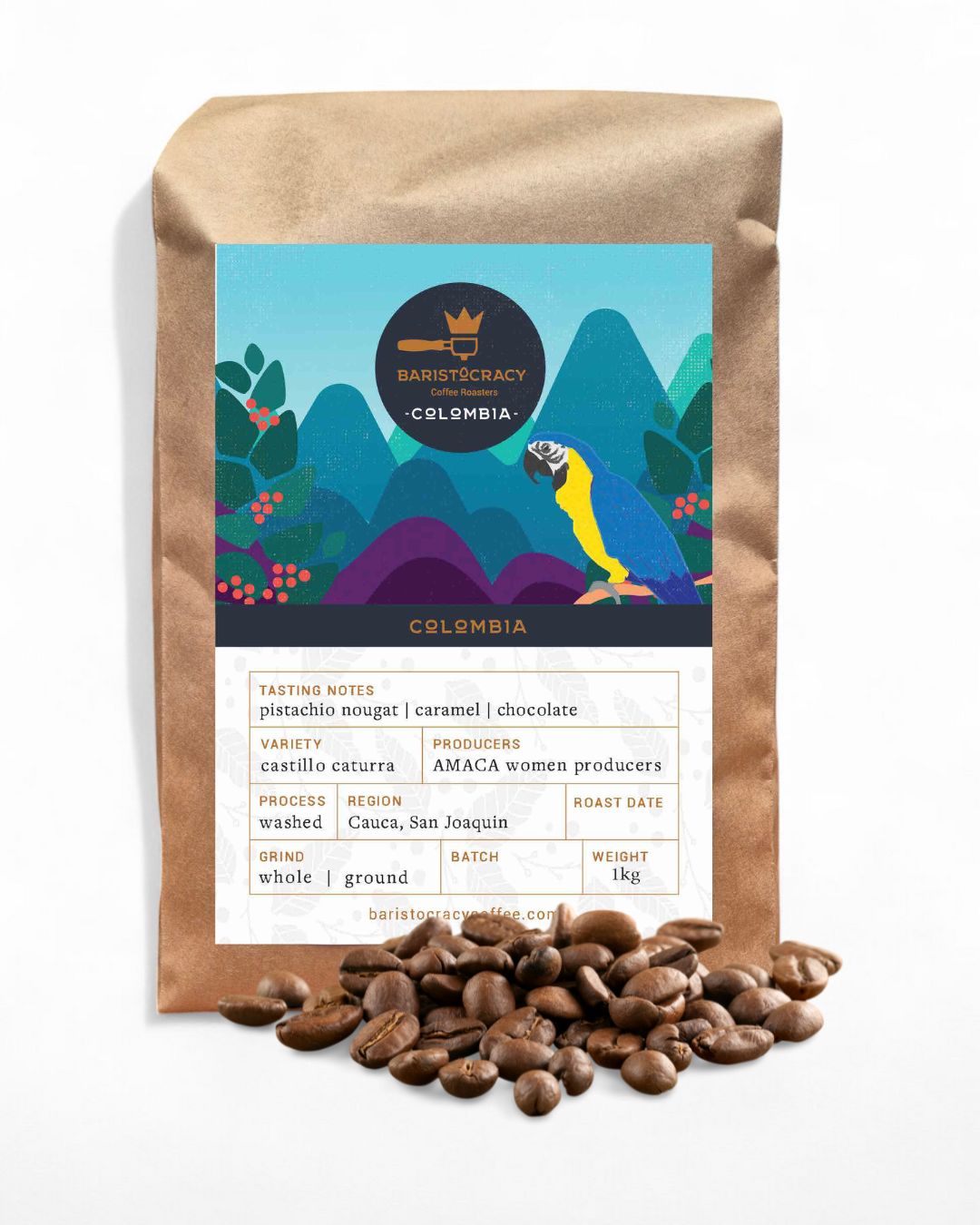
Colombia
Flavour profiles - caramel, cocoa & nuts
Meters Above Sea Level (masl) - 1750
Usual processing methods - washed
Colombia, along with many South and Central American countries, has become synonymous with coffee. We know that there is plenty of high quality, delicious coffee grown in Colombia but what sets this coffee apart from others is not only how flavoursome it is, but who grows it.
AMACA (Asociación de Mujeres Productoras Agropecuarias del Cauca) is a group of women coffee producers located in El Tambo, Cauca, Colombia. The association was formed in 1999 by 80 local women; today, it has over 140 members, all women smallholder farmers and heads of household.
All of AMACA’s members derive their livelihoods and support their families from their coffee.
Membership of AMACA represents three different villages within El Tambo, and the average farm size ranges from 1–3 hectares, at about 5,000 trees per hectare. Each coffee tree produces less than 2.5kg of beans per year so these are smallholders working together to bring their harvest to the world market.
Every step of coffee production, on this scale, is done by hand. Cherries ripen at different stages, even on the same branch, so much be picked by hand. They are then sorted and processed, small machinery is used to pulp the fruit from the bean and hull any remaining fruit and silverskin. However, fermentation and drying stages are carefully watched over with beans turned by hand throughout the process to ensure consistency.
This is a washed coffee meaning the fruit is removed from the bean in running water very soon after being picked and sorted. Washing process typically results in a very clean coffee, showcasing the natural flavour of the bean with only a little fermentation.
This coffee is great to work with, if you have an espresso machine at home and you’re looking for something that requires little in the way of daily adjustments for perfect extraction, this is the one for you.

Baristocracy Coffee
COLOMBIA
Share


